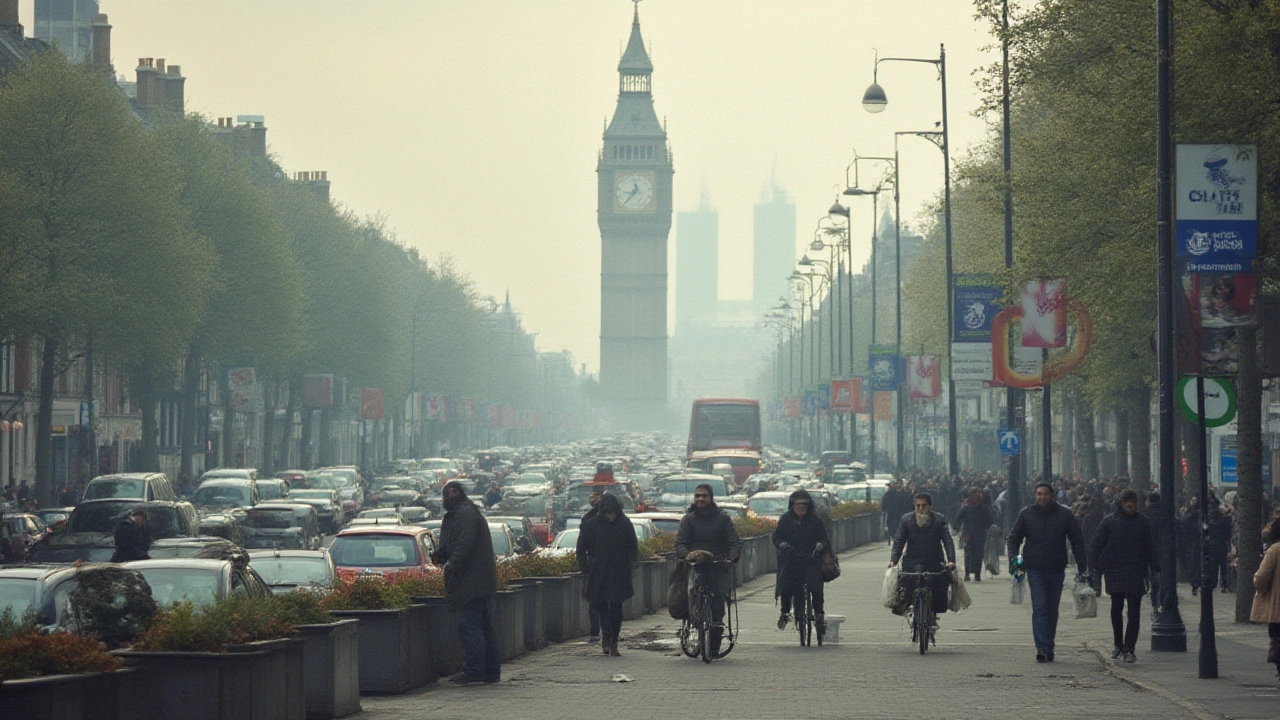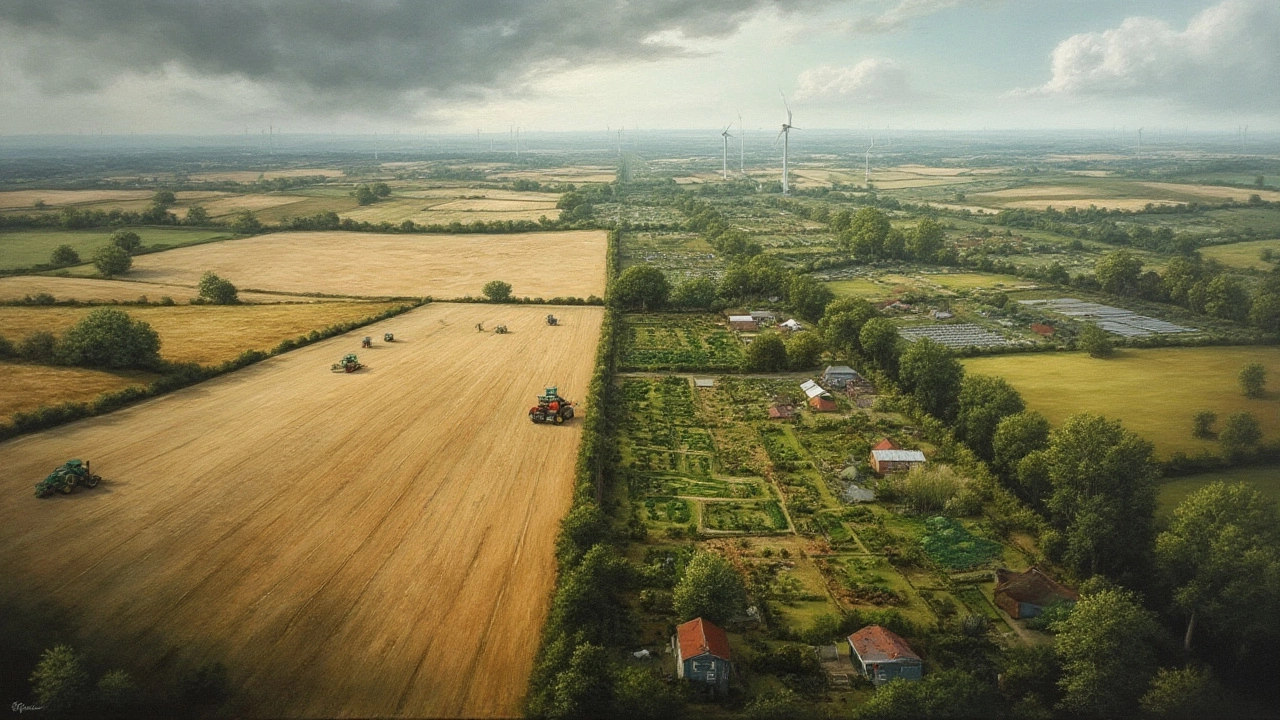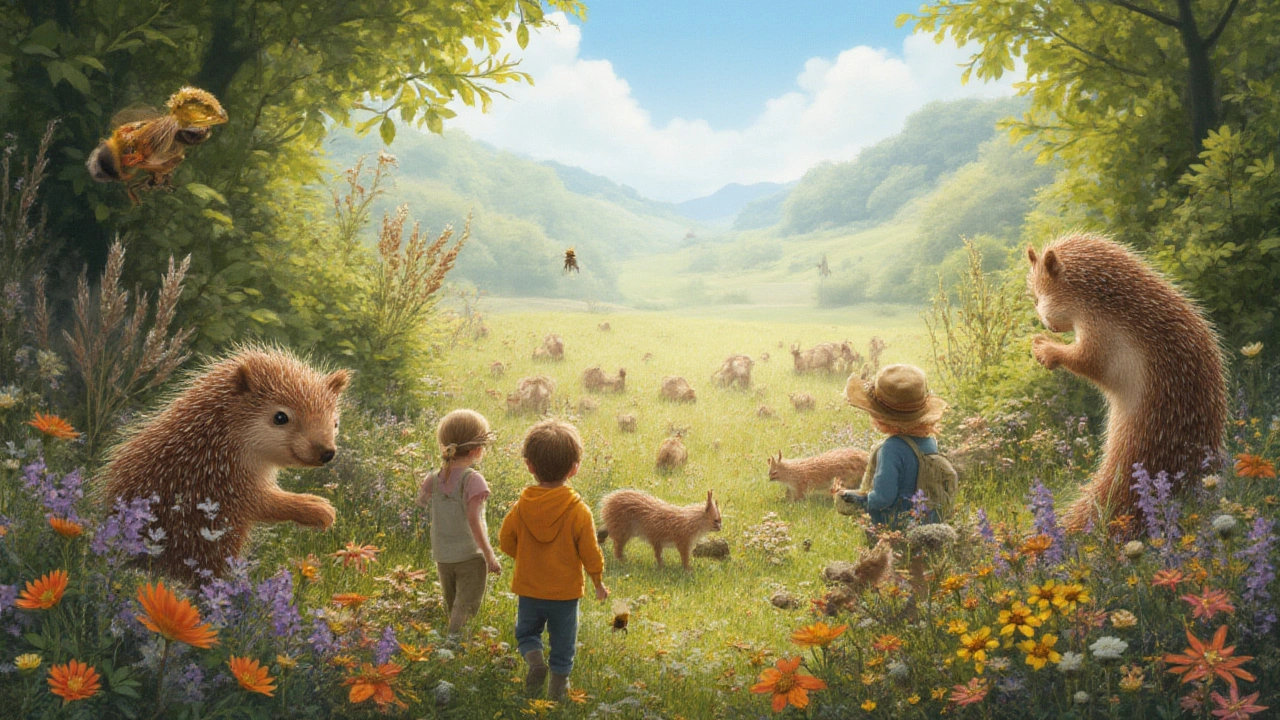Three Main Environmental Problem Groups and How They Affect Our World
 Jul, 16 2025
Jul, 16 2025
Picture this—about one million plastic bottles are bought every single minute worldwide, and only a tiny fraction are ever recycled. Now tie that image with the fact that 2024 saw the highest average global temperature ever recorded, spiking anxiety everywhere. But here’s the twist: these visible headlines only scratch the surface of the planet’s deeper wounds. Enough doom and gloom, right? Let’s really break it down and talk honestly about what’s hurting the Earth today. There isn’t just one mega-problem, but three interconnected monsters that shape our future and the lives of every living thing.
Pollution: The Everyday Enemy Lurking Everywhere
If you wake up past 7 a.m. in a city, chances are, you’ve opened your window to a bit of a smoggy smell. Whether it’s plastic in the ocean, smog over skylines, or chemicals sneaking into rivers, pollution is everywhere, every day. Let’s get specific here—pollution isn’t one thing. There’s air pollution, water pollution, and soil pollution. Each type is a heavyweight champion when it comes to quiet destruction. For instance, 99% of the world’s population is breathing air that exceeds WHO guidelines. But air pollution doesn’t just mean obvious clouds—it includes sneaky indoor culprits like smoke from cooking or heating, and that can be just as deadly as busy highways.
Take a look at this:
| Type of Pollution | Main Source | Impact | Yearly Deaths (approx.) |
|---|---|---|---|
| Air | Vehicles, Industry, Fires | Asthma, Cancer, Climate Effects | 7 million |
| Water | Wastewater, Plastics, Chemicals | Disease, Poisoned Ecosystems | ~1.4 million |
| Soil | Pesticides, Landfills, Mining | Food Contamination, Loss of Fertility | Unknown |
Water pollution? Thanks to things like oil spills and chemical dumps, about 80% of wastewater goes untreated back into the environment. That’s not just a statistic—imagine swimming in a river filled with industrial by-products, or worse, imagine growing your food near it. Microplastics are now showing up in honey, sea salt, and even the food you toss in your lunch bag. Soil pollution doesn’t make as many headlines, but it’s a silent thief—stripping nutrients from the ground, poisoning crops, and eroding the green layer we all depend on for food.
So what can you actually do, besides recycling the occasional bottle? First up, skip single-use plastics as much as you can—use reusable bags, bottles, or even beeswax wraps for food. Think about eco-friendly cleaning products that won’t poison water systems. Plant something, anything—a humble basil pot helps produce cleaner air than you think. And if you’re able to walk or bike instead of drive, those minutes add up to less air pollution and cleaner street corners.

Resource Depletion: Running on Empty Faster Than You Think
When was the last time you honestly thought about where your electricity or food comes from? Our demand for resources—oil, fresh water, wood, minerals—is relentless. Here’s a wild fact: humanity uses about 1.7 times the resources the Earth can regenerate in a year. If everyone lived like the average American, we’d actually need five Earths just to keep up. Scary, right?
This environmental problem group is like overspending on your monthly budget and expecting next month’s paycheck to magically triple. Water shortages are a stark reality for over 2 billion people. Forests the size of Greece are lost every year, mostly for farming or logging. Some minerals, like rare earths used in smartphones, are being mined so aggressively that experts estimate supplies won’t last beyond a few more decades at current rates.
Take a peek at this table to see how fast the clock is ticking:
| Resource | Current Use Rate | Estimated Years Left |
|---|---|---|
| Freshwater (safe supply) | 2x Renewal Rate | By 2025, 1.8 billion may live with water scarcity |
| Fish Stocks | 90% Fully or Over-exploited | Colllapse possible in decades |
| Forests | 10 million hectares lost/year | Critical biodiversity loss by 2050 |
| Rare Earths (for electronics) | Growing demand | Some depleted in < 30 years |
Much of this comes down to habits—meat-heavy diets needing more land and water, fast fashion, and an “upgrade culture” built on tossing last year’s tech. Fossil fuel addiction is a classic culprit, driving not just climate change, but also toxic spills, air pollution, and conflict. The knock-on effects? Crop failures, higher prices, fights over water and arable land, and wildlife getting crowded out of their homes. You see the overlap here—depleting forests or fish doesn’t just empty our cupboards; it wrecks habitats and kills off species, feeding into other environmental issues.
Tips? Try joining a clothing swap or buying used gear. Eat local and seasonal, which usually means fewer resources were burned to bring it to you. Shorter showers, leak checks, and rainwater barrels can dial down water waste. And that “should I upgrade my phone?” dilemma? Stretch it another year—less waste, fewer minerals mined, happier planet.

Biodiversity Loss: The Silent Collapse of Nature’s Web
Walk through any park and it feels alive—chirping birds, busy squirrels, flowers everywhere. But zoom out, and you realize things aren’t so rosy. Since 1970, monitored animal populations worldwide have dropped by about 69%. Every day, 150 species quietly disappear forever. Losing biodiversity isn’t just a sad side story; it’s the undoing of entire life-support systems, including our own.
Biodiversity loss isn’t just about tigers or elephants. It’s losing the pollinators that help three-quarters of the world’s food grow. It’s the collapse of tiny wetland creatures cleaning water, or fungi keeping forests in check. Main causes? Habitat destruction (think: clearing forests for farmland), pollution, climate change, and invasive species that outcompete local wildlife. Each missing species is a broken cog—imagine a car losing random parts; eventually, nothing runs.
Let’s check some eye-popping examples right now:
| Biological Group | Percentage Decline (since 1970) | Main Threat |
|---|---|---|
| Freshwater species | 83% | Pollution, Water Extraction |
| Amphibians | Over 40% threatened | Habitat Loss, Disease |
| Birds | 1 in 8 at risk | Habitat Loss |
| Wild Plants | About 30% at risk | Land-Use Change |
What might hit hardest is that with less biodiversity, whole food webs unravel. Fewer bees mean poor harvests. If forests become mostly one type of tree, they’re more likely to be wiped out by pests. And don’t forget how traditional medicines and new drugs come from wild plants—lost species mean lost cures.
What to do, then? Start with your own space. Grow a window box with native flowers, making a mini-refuge for pollinators. Reduce your lawn and plant diverse shrubs. Support groups protecting wild habitats or join a local clean-up event—you’d be surprised how many interesting people you meet. If you eat seafood, check for eco-labels that protect stocks. Even the smallest outdoor corners, like abandoned lots, can be turned into pocket wildlife havens.
Pulling it together, these three main environmental problem groups—pollution, resource depletion, and biodiversity loss—mix and multiply, making solutions anything but simple. But knowing the details, noticing where you fit into the web, and making even a few small changes can steer the ship a little closer to safe waters. The planet’s problems might seem huge, but you know what? Every day gives you another shot to chip away at them. Why not start today?
